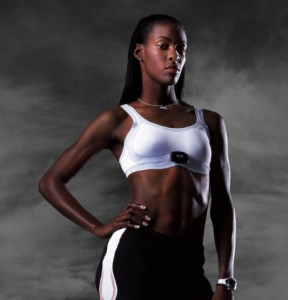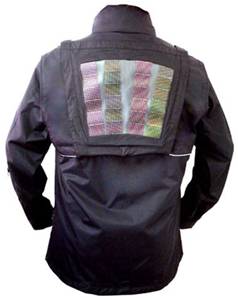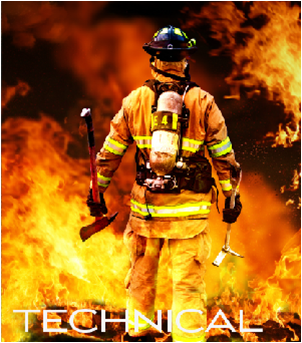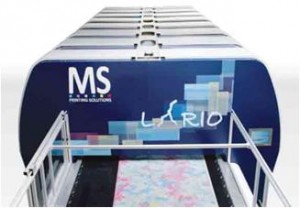Smart textiles – hope for the European textile industry for a better future?
In the last 10 years 50% of jobs were lost in the European textile industry[1], as a result of manufacturing shifting to emerging markets, in particular to China and South Asia.

Functional, technical textiles and smart textiles are a big hope for the European textile industry, for a better future. Technical textiles in the EU, a market of 45 bio €, are growing by 3.2% per annum (CAGR[2]), opposite a declining trend of the European textile industry of 4%, since 2000[3]. Globally the market is 127 bio USD (CAGR 3.8%). In Germany, technical textiles have grown since the middle of the 1990s by 40%, while in the same period the production output of the textile industry has declined by 70%, and more than 50% of jobs have been lost, according to Deutsche Bank research[4]. Therefore, technical textiles have a significant meaning for Europe, and for Germany in particular – Germany is considered as the global market leader in technical textiles4.
Of the technical textiles segment, smart textiles are one of the technically highest sophisticated segments, and most attractive for future growth. The market size of smart textiles is estimated at 1.1 bio USD in 2010, with a impressive CAGR of 30%, claimed in a vision paper of Systex[5]. Assuming the number is correct, a growth rate of 30% would imply a market of 2.5 bio USD, already by 2013. The number is still small, compared with a total global market of 127 bio USD for technical textiles, yet the growth prospective is enormous.
Technical textiles and smart textiles are differentiated as follows
“Technical textiles: Materials and products intended for end-uses other than non-protective clothing, household furnishing, and floor covering, where the fabric or fibrous component is selected principally but not exclusively for its performance and properties as opposed to its aesthetic or decorative characteristics” (Textile Institute Manchester)[6]
“Textiles ….intended for clothing or domesticated use (curtains, furnishing, flat linen, etc) are rather qualified as Functional Textiles (Boldoduc SAS)[7].
„Smart or intelligent textiles are functional textiles which interact with their environment by responding to it“ (Systex )” [5].
Interaction with the environment is the key that makes textiles smart. This means, for example, environmental parameters such as the outside temperature is measured and the textile responds to that by heating or cooling.
Depending on the degree of functional intelligence, and the degree of integration in textiles, products are differentiated as wearable electronics, smart textiles and “ordinary” functional textiles. Smart textiles are textiles with high functional intelligence, integrated in textiles.
Examples for wearable electronics include
- Heatable textiles and textiles with built in electronics
- NavJacket (by O´Neill)[8], interactive clothing “with an sophisticated social networking tool that allows the uploading and sharing of your rides down the slopes on … ski areas”
- Heated Gloves, vests and jackets (by Warmthru, NorthFace)[9],[10]
- Heated underwear (by WarmX)[11]
- Integrated Training System (adidas / Polar)[12]
- Solar jacket with embedded solar cells (ScotteVest[13]), with integrated power source
 |
 |
 |
|
Heatable clothes (Warmthru) |
Integrated training system (adidas Polar) |
Solar jacket (ScotteVest) |
Highlights of (more or less) smart textiles include
- Health Monitoring [14] – garments for monitoring health and medical conditions,
Examples:- VivoMetrics life shirt [15], for remote monitoring of patient vital signs
- Numetrex Sports Bra [16] (by Textronics), the Heart Rate Monitor Sports Bra, sensing fibres directly knit into the fabric
- Sensatex smart shirt [17], a network of optical fibres,
“to remotely monitor a wearer’s movement, heart rate, and respiration rate in real-time through a patented nanotechnology conductive fiber grid that is seamlessly knit into the material of the fully washable shirt”
- Military:
- active cooling system (Gore), “Providing up to 150W cooling power and excellent cooling distribution”[18]
- Fashion:
 |
 |
 |
|
Vivometrics Lifeshirt |
Luminex fashion |
Sensatex smart shirt |
The above collection is only a selection of the existing products, of which some have historical significance. The market will eventually decide on commercial significance as well.
The author tried to collect some of the mentioned items in German retail outlet shops in a major metropolitan area. The author also called the online shop of some suppliers, and contacted some of the product managers of the companies. The experience, however, was rather frustrating. In practical terms it proved to be very difficult to find and purchase these items, even in specialized shops these products were hardly known. Market penetration and consumer awareness, of wearable electronics and smart textiles, it seems, is still very low.
Interestingly, according to Systex [5], amidst the high expectations the market for smart textiles has been falling short of expectations so far, and is continuously failing to reach expectations of forecasted market potentials.
In Germany, “16 textile research institutes are working on smart textiles, however time to market is still too slow”, says Klaus Jansen, managing director of Forschungskuratorium Textil e.V [21]. He concludes that “a closer contact between academics and businesses is necessary to advance products made in Germany to world leading position in marketplace”.
Breakthroughs in the smart textiles sector have been limited because of difficulties to develop user friendly smart textiles, without adverse implications. For example, problems usually encountered are the lack of effective textile sensors, irritations of the wearer´s skin, unstable electrical contacts, and lack of washability. Size and weight of the components, durability, energy consumption, optics and price are further considerations. A deeper textile integration is a primary target, however, more fundamental R&D is required to meet this target.
The added value for the consumer, amidst high prices for wearable electronics and smart textiles, is often questionable. Why should a consumer buy one integrated smart textile when he can get the same effect from conventional textiles and non textile add-ons?
Further reading recommended by the author, is a good compilation by Carvajal Vargas[22], who gives a detailed analysis of available products, pros and cons of the technologies.
Systex has done an interesting SWOT analysis5 outlining the strengths, weaknesses, opportunities and threats for the segment of smart (interactive) textiles, from the perspective of a European textile enterprise, typically small and medium sized enterprises (SMEs).
A compressed summary is shown here:
| Strengths | Weaknesses |
| Fast technology advances in supporting industries (such as electronics) Research focus in many universities High flexibilities in SMEs Funding programs available in the EU |
R&D gaps in the value chain Risk adverse attitude and lack of capital in SMEs Critical mass amidst high production cost Scale up difficult – no pilot plant equipment available |
| Opportunities | Threats |
| Enormous market growth potentials Diversification in attractive business segments New role of integrator |
Electronics has different legacy compared to the textile industry Insufficient performance of devices Insufficient consumer acceptance Competition in the Far East is catching up quickly |
Moreover, there are technical challenges for smart textiles
- Materials – electrical or optical conductive fibres and yarns, metal fibres, coated or metal clad fibres (outer metal layers on base polymer fibre)
- Processing technologies – temperature sensitive widening of metal fibres and corrosion protection
- Textile and soft sensors and non textile hard sensors to measure humidity, temperature, pressure, elongation, movement, respiration, cardiograms etc
These technical challenges have often limited the development higher integrated textile products.
Latest product research from Nottingham Trent University in the UK gives new hope for substantial progress in the field. The academics develop wearable computers which can withstand washing. This is one step closer thanks to a technology which integrates electronic micro devices into yarns which could be used for medical and military purposes[23].
These new innovative concepts give us hope for a brighter future. Smart textiles can be a chance for the future, for significant innovations in textiles and new business opportunities for the struggling European industry.
[1] Key indicators including jobs statistics textile industry in EU27: http://epp.eurostat.ec.europa.eu/statistics_explained/images/2/23/Key_indicators%2C_manufacture_of_textiles_%28NACE_Division_13%29%2C_2009_A.png, http://epp.eurostat.ec.europa.eu/statistics_explained/images/0/03/Key_indicators%2C_manufacture_of_textiles_%28NACE_Division_13%29%2C_2009_B.png
[2] CAGR is compound annual growth rate
[4] Heymann,E., Deutsche Bank Research: Textile and Clothing Industry (2011)
[5] Systex D5.5 Vision paper, 5.11.2010, http://www.systex.org/
[7] Definition functional textiles
[17] Sensatex , more
[18] Gore active cooling
[19] http://www.cutecircuit.com
[21] http://www.textilforschung.de
[22] Carvajal Vargas, S.: „Smart Clothes – Textilien mit Elektronik“, Diplomica Verlag Hamburg, 2009




Pingback: Smart textiles – hope for the European textile industry?Science and Technology Blog | La de uno cualquiera...